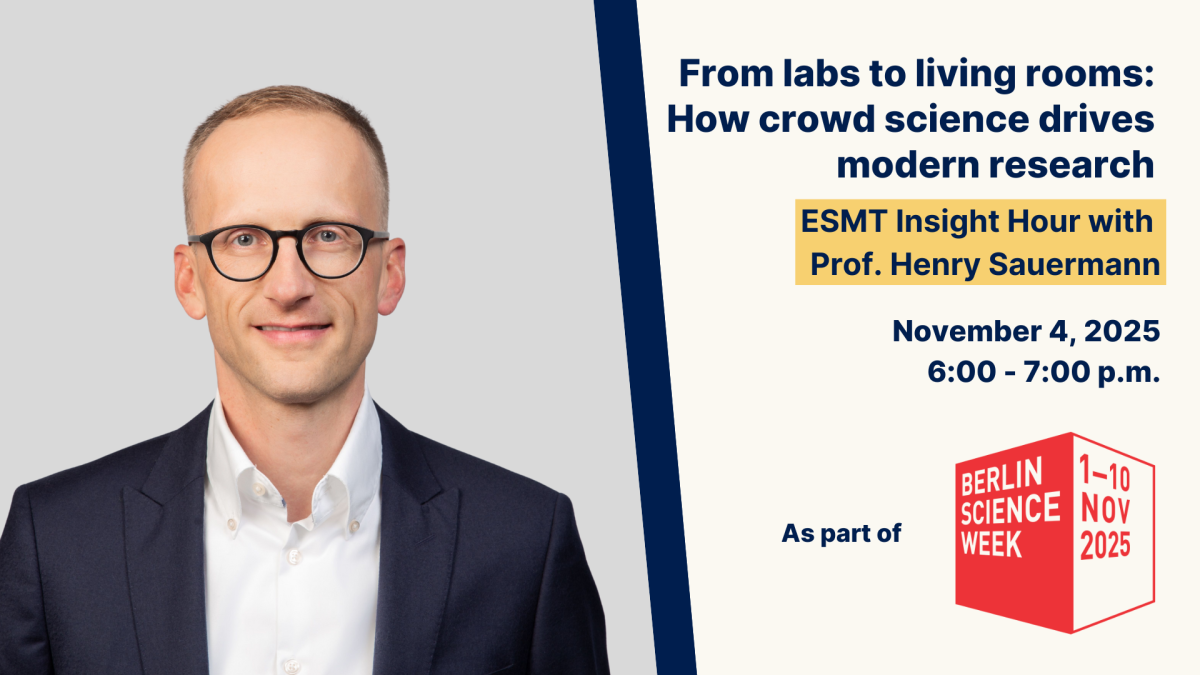From labs to living rooms: How crowd science drives modern research

Drawing on over a decade of research, Sauermann presented the evolution of crowd science, its organizational challenges, and its interaction with artificial intelligence. The session revealed how millions of volunteers—from amateur astronomers to patients and citizen data collectors—are transforming the reach and inclusiveness of science.
Top five learnings from the event
1. Crowd science broadens who can do research
Sauermann emphasized that crowd science redefines who participates in scientific discovery. Beyond donating data, citizens now engage in designing studies, analyzing results, and shaping research priorities. From global biodiversity mapping to local air-quality monitoring, these projects democratize science by opening access to people outside traditional institutions. “It’s not just about scientists asking for help,” Sauermann noted. “It’s about creating opportunities for anyone to contribute meaningfully to discovery.”
2. The five crowd science paradigms explain why and how crowds add value
Sauermann outlined five core paradigms—each capturing a distinct way in which crowds advance research:
- Crowd volume: harnessing mass participation for large-scale data collection (for example, Galaxy Zoo or eBird)
- Broadcast search: seeking rare, creative solutions from many minds (such as Foldit’s protein design challenges)
- User crowd: leveraging unique experiential knowledge, such as patients’ insights in medical studies
- Community production: enabling collaborative problem-solving, as seen in projects like Wikipedia or Epidemium
- Crowd wisdom: aggregating independent judgments to reach surprisingly accurate results (for instance, prediction markets)
These frameworks, central to Sauermann’s book, help organizers and participants understand when and how to involve the crowd effectively.
3. Motivation and quality management are key organizational challenges
While participants rarely receive financial rewards, motivation remains high. People join for passion, curiosity, social connection, or a sense of purpose. Ensuring research integrity, however, is complex. Organizers must balance open participation with quality control and fairness—deciding who owns data, how contributions are recognized, and how diverse voices are represented.
“In most projects, 99.5 percent of people don’t get paid,” Sauermann said. “They participate because they care – but that means organizers must design systems that respect and sustain their engagement.”
4. Artificial intelligence is reshaping, not replacing, crowd science
AI plays multiple roles in crowd science:
- Automation: replacing routine classification tasks (for example, AI now handling many Galaxy Zoo images)
- Augmentation: helping citizen scientists improve their work (such as bird-identification apps)
- Algorithmic management: optimizing how tasks are distributed and contributors are motivated
While AI can automate some functions, it cannot replicate the human experience that fuels democratization and learning – key values of the citizen science movement.
5. Crowd science balances productivity and democratization
A central insight from Sauermann’s talk was the tension between two goals:
- Productivity: making science faster and more efficient
- Democratization: making science more participatory and inclusive
The most impactful projects achieve both—improving research outcomes while empowering people to understand and shape the scientific process. This balance, Sauermann argued, is vital for addressing complex global challenges such as climate change and public health.
Conclusion
The Insight Hour underscored that crowd science is not a niche experiment but a transformative movement – one that links scientific rigor with civic engagement. As Sauermann concluded, future innovation depends not only on advanced tools or algorithms but also on the creativity, curiosity, and collaboration of citizens around the world.